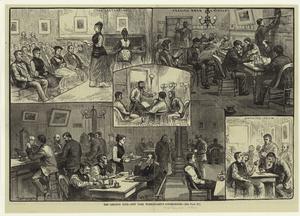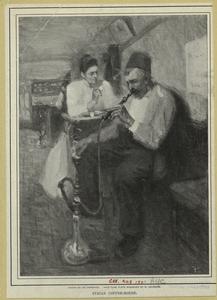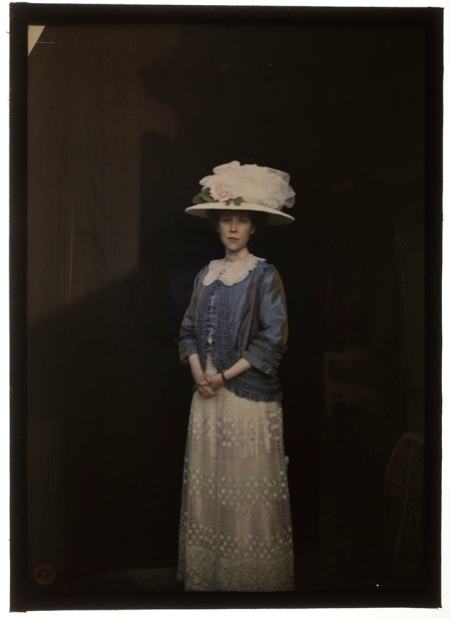 The Lebanon Club, New York working men's coffee house, 1880. Courtesy NYPL. (Click for larger image.)
The Lebanon Club, New York working men's coffee house, 1880. Courtesy NYPL. (Click for larger image.) Syrian coffee-house, by Jay Hambridge & engraved by Henry Davidson. NYC, August 1901. Courtesy NYPL. (Click for larger image.)
Syrian coffee-house, by Jay Hambridge & engraved by Henry Davidson. NYC, August 1901. Courtesy NYPL. (Click for larger image.)In his 1905 account of social life on the Lower East Side, journalist A.H. Fromenson wrote, "What saloons there are on the East Side do but an impoverished business and are dependent to a large extent upon the chance passerby."
However, he was quick to point out that social life thrived on the East Side--if not in beer saloons, but "coffee saloons." These cafes--totalling close to 300--offered places to discuss socialism, play chess, critique the theater, and listen to music. What united them was their elevation of tea as the social drink.
Tea was sometimes accompanied by lemon, or imbibed while clenching a sugar cube in the teeth. "And where the cigarette smoke is the thickest and the denunciation of the present forms of government loudest, there you find women!" In a neighborhood in which most women and men were crammed into tenements, to social spaces offered by cafes were all the more important.
Cafes also served as box-offices for local theater productions, as this 1899 poster diplays:
 Courtesy NYPL. Click for larger image.
Courtesy NYPL. Click for larger image.Partial translation reads: 'Bizet's world-famous opera will be performed for the first time [in Yiddish] with Miss Guttman as Carmen, Miss E. Siebert as Micaela, Miss Elkas as Frasquita, Mr. Cantari as Escamillo, Mr. Harti as Remendado, Mr. Steinhof as Zuniga, and Mr. M. E. Medvedieff as Don Jose. A special choir of 20 children, together with full chorus, orchestra, scenery, and costumes.
Tickets available at the box office, at Herrick Brothers, at Schinkman's Cafe, 126½ Canal Street, at Schmuckler's Cafe, 167 East Broadway, at Schreiber's Cafe, 256 Grand Street, and at Rosenberg's Sausage Store, 200 Broome Street. Children under five years of age positively not admitted.'
- Posted by Kate Stober, with special thanks to Annie Polland


















































